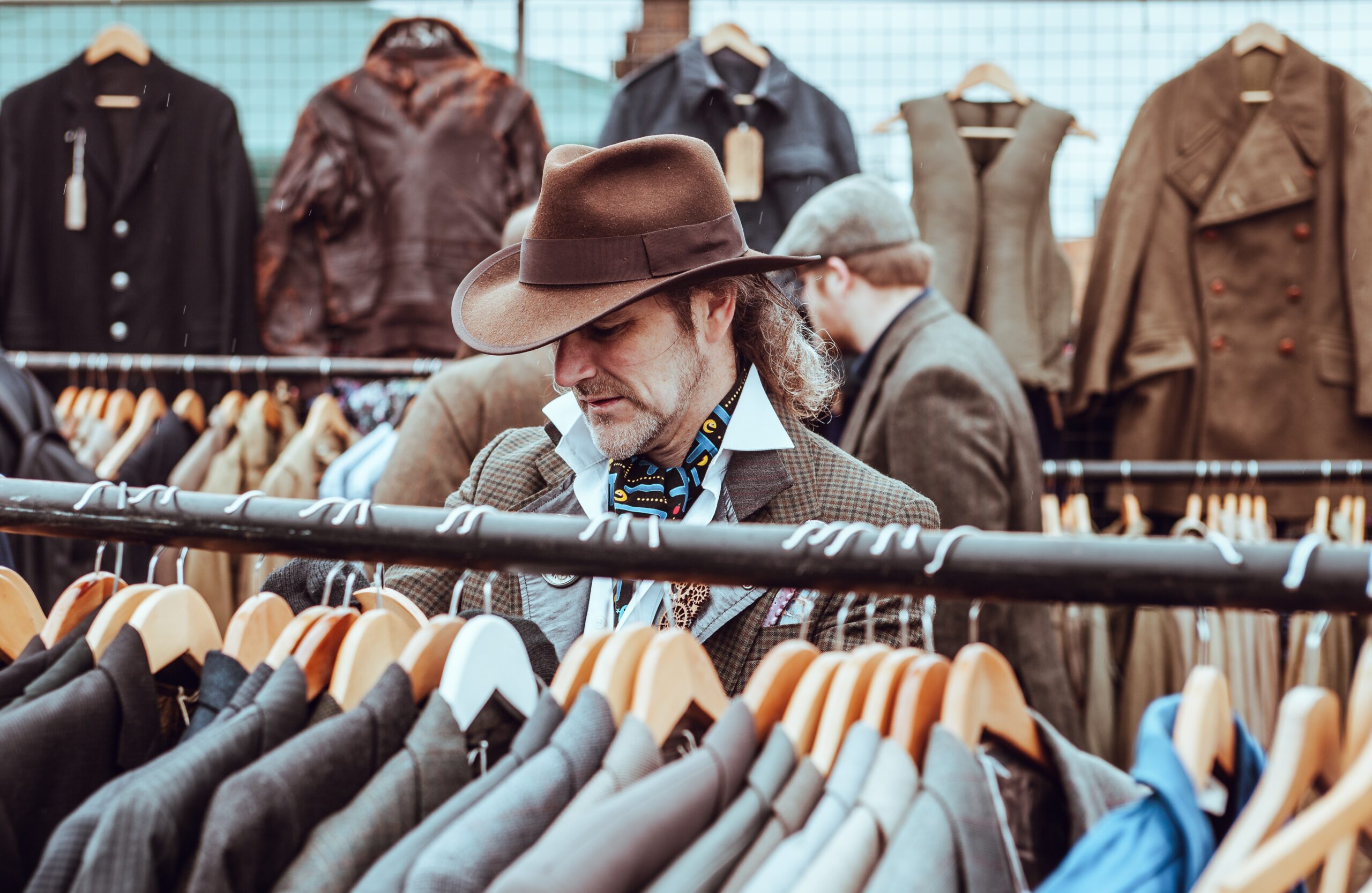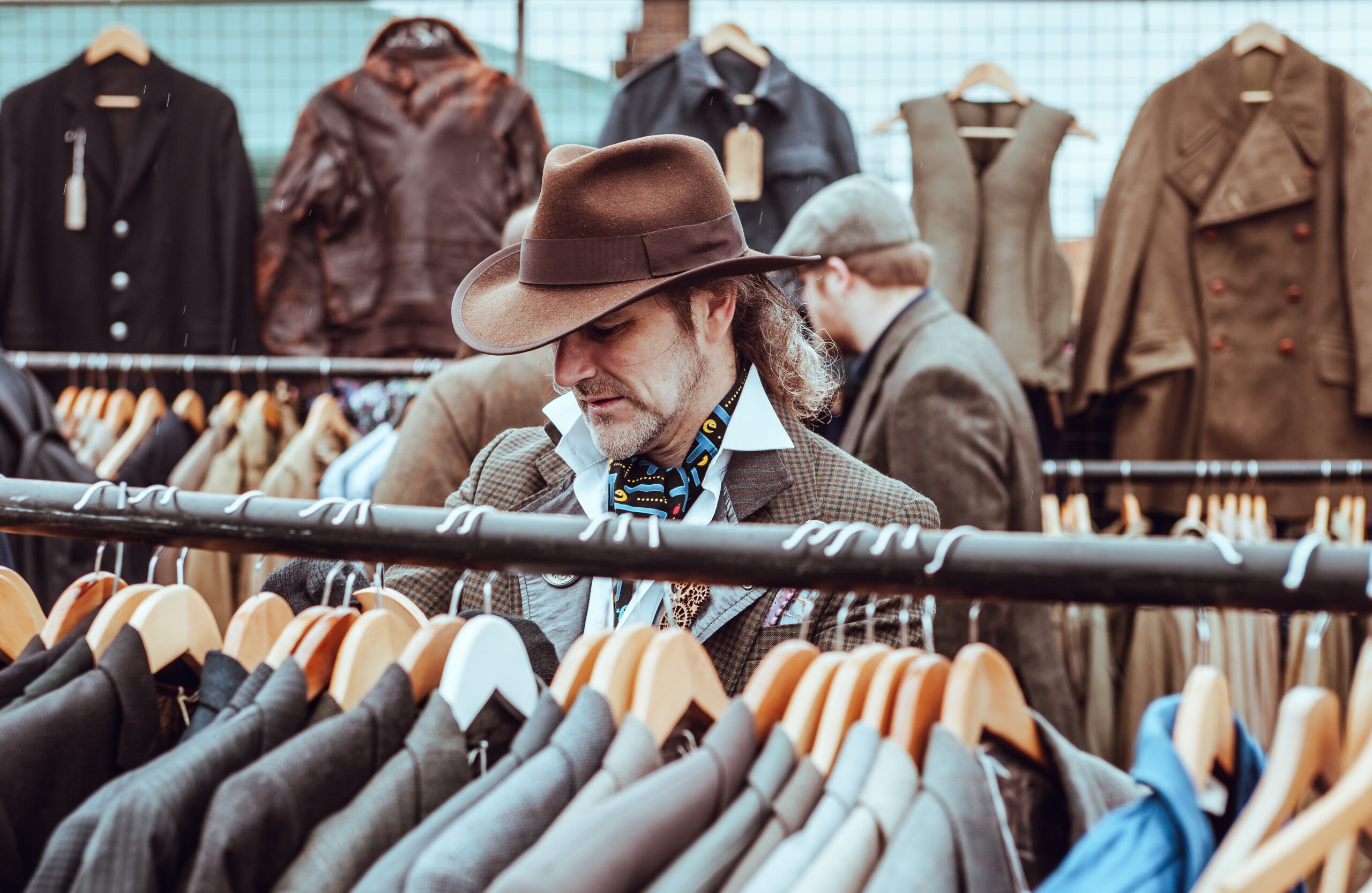So you’re ready to take your outdoor adventures to the next level and invest in a scope, but where do you start? With so many options out there, it’s important to know what to prioritize when making this important purchase. From magnification power to lens quality, there are several key factors to consider that will ensure you find the perfect scope for your needs. In this article, we’ll guide you through the essential elements you should look for when buying a scope, helping you make an informed decision that will enhance your outdoor experiences. Get ready to bring a whole new level of clarity and precision to your observations!
Understanding the Purpose of the Scope
When it comes to buying a scope, it is important to consider its intended purpose. Scopes can be used for various activities such as hunting, target shooting, varmint hunting, long distance shooting, and tactical shooting. Each of these activities has different requirements when it comes to the features and specifications of a scope. By understanding the purpose of the scope, you can make a more informed decision and choose the right one for your needs.
Hunting vs. Target Shooting
One of the first considerations to make when buying a scope is whether you will be using it for hunting or target shooting. Hunting scopes are typically designed to be lightweight, compact, and durable. They often have a wider field of view to help track fast-moving targets. On the other hand, target shooting scopes are often larger and offer higher magnification levels. They are designed to provide precise and clear images at longer distances.
Varmint Hunting
If varmint hunting is your primary activity, there are scopes specifically designed for this purpose. Varmint scopes typically have higher magnification levels and offer features such as adjustable objective lenses to help eliminate parallax. These scopes are ideal for targeting small, elusive creatures at longer distances.
Long Distance Shooting
For those interested in long distance shooting, a scope with high magnification power and clear optics is essential. Long distance shooting scopes often have features such as exposed turrets for quick and easy adjustments, along with reticles that allow for precise bullet drop compensation.
Tactical Shooting
Tactical shooting scopes are designed to meet the demands of law enforcement and military personnel, as well as civilian shooters interested in tactical competitions. These scopes typically have features such as illuminated reticles, long eye relief, and rugged construction to withstand harsh environments.
Scope Lens Quality
The quality of the lenses in a scope plays a crucial role in determining the clarity and brightness of the image you see through it. When considering a scope, it is important to pay attention to lens coatings, light transmission, and lens clarity.
Importance of Lens Coatings
Lens coatings are applied to reduce glare, increase light transmission, and improve image clarity. Scopes with multiple layers of coatings, such as fully multi-coated or fully multi-coated with anti-reflective coatings, offer superior performance in terms of brightness and image quality. These coatings reduce unwanted reflections and maximize the amount of light that reaches your eye.
Understanding Light Transmission
The amount of light a scope transmits is an important factor to consider, especially in low-light conditions. High-quality scopes often have higher light transmission rates, which allows for better visibility and image clarity. The light transmission percentage is typically mentioned in the scope specifications, and it is recommended to choose a scope with a higher percentage for enhanced performance in low-light settings.
Analyzing Lens Clarity
Lens clarity refers to the ability of the scope to provide a clear and sharp image. A scope with superior lens clarity will allow you to see fine details and distinguish targets more easily. It is important to look for scopes with high-quality glass and precision manufacturing to ensure optimal lens clarity. Cheaper scopes may have lower quality lenses, resulting in reduced image quality and potentially affecting your shooting performance.

Magnification Power
The magnification power of a scope determines how much larger the target appears when viewed through the scope. Understanding the different levels of magnification, choosing the right magnification for your needs, and considering the options between fixed and variable power scopes are all important aspects to consider when buying a scope.
Different Levels of Magnification
Scopes come with various levels of magnification, typically expressed as a range (e.g. 3-9x). The first number represents the minimum magnification, while the second number represents the maximum magnification. Lower magnification ranges such as 1-4x or 2-7x offer a wider field of view and are ideal for close-range shooting or fast-moving targets. Higher magnification ranges, such as 6-24x or 8-32x, are suitable for long distance shooting and precision aiming.
Choosing the Right Magnification for Your Needs
To determine the appropriate magnification for your needs, consider the distances at which you will be shooting and the size of your targets. If you plan on shooting at shorter distances or larger targets, lower magnification would be sufficient. For longer distances or smaller targets, higher magnification would be required. It is also essential to consider your shooting abilities and comfort level with higher magnification, as higher magnification can amplify any shakiness in your hold.
Fixed vs. Variable Power
When selecting a scope, you will come across both fixed and variable power options. Fixed power scopes offer a single level of magnification, such as 4x or 6x. They are often more rugged and reliable due to their simpler design. Variable power scopes, on the other hand, allow you to adjust the magnification based on your needs. They offer versatility and the ability to adapt to various shooting scenarios. The choice between fixed and variable power depends on your specific requirements and shooting preferences.
Scope Reticle Type
The reticle, also known as the crosshairs, is a critical component of any scope. Different reticle types offer various advantages and suit different shooting styles and activities. Understanding the different reticle types, such as dot reticles, BDC reticles, mil-dot reticles, and TMR reticles, can help you make an informed decision when choosing a scope.
Dot Reticles
Dot reticles, also known as simple crosshairs, are the basic and most common reticle type. They consist of a thin vertical and horizontal line intersecting in the middle to form a simple “+” shape. Dot reticles provide a clear and unobstructed view of the target, making them ideal for precision shooting at shorter distances.
BDC Reticles
Bullet Drop Compensating (BDC) reticles are designed to compensate for bullet drop at different ranges. BDC reticles feature additional horizontal lines or dots below the main crosshair that correspond to specific range intervals. By using these markers, you can adjust your aim accordingly and compensate for the bullet’s drop over different distances without making elevation adjustments.
Mil-Dot Reticle
Mil-Dot reticles are widely used in military and tactical applications. They consist of thin lines intersecting the center of the reticle, with evenly spaced dots or hash marks along the lines. These dots or hash marks serve as reference points to estimate the distance to the target or make windage and elevation adjustments. Mil-Dot reticles offer great versatility and are popular among long-distance shooters.
TMR Reticle
The Tactical Milling Reticle (TMR) is a popular reticle type among law enforcement and military personnel. It features a combination of mil-dots and hash marks, allowing for precise range estimation, windage, and elevation adjustments. TMR reticles are ideal for tactical shooting and can assist in making quick, accurate shots under various conditions.

Overall Scope Size
The size of the scope can have an impact on its weight, handling, and overall shooting experience. Considering the effects of the scope size on weight and handling, as well as selecting the appropriate size for your specific activity and preferences, is important when making a scope purchase.
Effects of the Scope Size on Weight and Handling
Larger scopes tend to be heavier, which can affect the balance and maneuverability of your firearm. It is essential to find a scope size that strikes a balance between the features you need and the weight you can comfortably handle. For activities that require quick and agile movements, such as hunting or tactical shooting, a smaller and lighter scope would be preferable. However, for activities that involve extended periods of target shooting, a larger scope may offer added stability and enhanced long-range performance.
Selecting the Appropriate Size per Activity
Different activities may require different scope sizes. Compact scopes are well-suited for hunting, where mobility and ease of use are crucial. Mid-size scopes strike a balance between weight and performance, making them versatile for a range of activities. Large scopes, while heavier, are often preferred for long-range shooting and target shooting competitions where stability and precision are paramount. Consider the specific requirements of your chosen activity to determine the appropriate scope size.
Durability and Construction
When choosing a scope, durability and construction should not be overlooked. A well-built and rugged scope can withstand the rigors of the field and ensure consistent performance in various weather conditions. Features such as waterproof and fogproof capabilities, shock-resistant design, and the material of the scope body are all important factors to consider.
Waterproof and Fogproof Features
Scopes that are labeled as waterproof and fogproof are designed to withstand the elements and offer reliable performance in adverse weather conditions. These scopes are sealed and filled with gas to prevent moisture and fog from entering the internal components. Waterproof and fogproof scopes are essential for outdoor activities where exposure to rain, humidity, or extreme temperature changes is likely.
Shock-Resistant Design
Scopes with a shock-resistant design can handle the recoil and vibrations generated by firing a firearm. The internal components of these scopes are protected to ensure longevity and maintain zero. A scope with a shock-resistant design is ideal for activities involving high-powered rifles or heavy recoil.
Material of Scope Body
The material used in the construction of the scope body determines its durability and resistance to wear and tear. Scopes are typically made from aircraft-grade aluminum or other high-quality materials. Aluminum scopes are lightweight and durable, making them a popular choice among shooters. Some scopes also feature additional protective coatings such as anodized finishes to increase their resistance to scratches and corrosion.

Adjustment Features
Adjustment features in a scope play a crucial role in optimizing your shooting performance and accuracy. Understanding windage and elevation adjustments, the importance of parallax adjustment, as well as the differences between locking and non-locking turrets and zero reset turrets can help you make an informed decision when selecting a scope.
Understanding Windage and Elevation Adjustments
Windage and elevation adjustments allow you to compensate for factors such as bullet drift and bullet drop, respectively. These adjustments typically involve rotating turrets located on the top and sides of the scope. It is important to ensure that the scope you choose provides precise and repeatable adjustments, facilitating quick and accurate target acquisition.
The Importance of Parallax Adjustment
Parallax occurs when the reticle appears to move relative to the target, even when your eye is perfectly centered. This can lead to aiming errors and decreased accuracy. Scopes with parallax adjustment allow you to focus the reticle at different distances, eliminating the parallax effect. Parallax adjustment is crucial for achieving a clear and precise aim, especially when shooting at longer distances.
Locking Turrets vs. Non-locking
Some scopes come with locking turrets, which can be secured after making adjustments to prevent unintentional movement. Locking turrets are beneficial in situations where the scope may be subjected to bumps or knocks, ensuring that your zero is maintained. Non-locking turrets, on the other hand, allow for quick and easy adjustments without the need for unlocking or locking. The decision between locking and non-locking turrets depends on your specific shooting style and the level of security needed for your chosen activity.
Zero Reset Turrets
Zero reset turrets allow you to quickly and easily return the windage and elevation adjustments to their initial zero settings. This feature is particularly useful when you need to make adjustments on the fly or when you want to return to your original zero after making temporary adjustments for specific shooting scenarios. Zero reset turrets eliminate the need for counting or keeping track of your elevation and windage adjustments.
Eye Relief and Exit Pupil
Eye relief and exit pupil are critical considerations when it comes to the comfort and usability of a scope. Adequate eye relief, understanding the exit pupil, and finding a balance between eye relief and field of view are important factors to keep in mind when buying a scope.
Importance of Adequate Eye Relief
Eye relief refers to the distance between your eye and the scope’s eyepiece that allows you to see a full field of view without any black edges or distortion. Having proper eye relief is crucial for avoiding scope eye injuries and maintaining a comfortable shooting position, especially when using high recoil firearms. Adequate eye relief can also reduce eyestrain and provide a more enjoyable shooting experience.
Understanding the Exit Pupil
The exit pupil is the small, circular beam of light that you see when you hold the scope at arm’s length and look through it. It is the bright dot in the center of the scope’s eyepiece. The diameter of the exit pupil is determined by the size of the objective lens divided by the magnification power. A larger exit pupil allows more light to enter your eye, resulting in a brighter image. Understanding the exit pupil is important because it influences the image brightness and how comfortable it is to use the scope, particularly in low-light conditions.
Balancing Eye Relief with Field of View
While it is important to have adequate eye relief, there is often a trade-off between eye relief and field of view. The closer your eye is to the eyepiece, the smaller the field of view will be. A wider field of view enables you to see more of your surroundings and track moving targets more effectively. Therefore, it is crucial to find a balance between comfortable eye relief and a sufficient field of view, depending on your activity and shooting preferences.
Mounting Options
Choosing the right mounting options for your scope is as important as selecting the scope itself. Mounts secure the scope to your firearm and ensure a proper alignment, which is crucial for accurate shooting. Understanding the differences between fixed and quick detach mounts, as well as the importance of proper scope rings, can assist you in making an informed decision.
Choosing Between Fixed and Quick Detach Mounts
Fixed mounts are permanently attached to your firearm and offer a stable and secure platform for your scope. Once installed, the scope remains in place, ensuring consistent zero. Quick detach (QD) mounts, on the other hand, allow for easy removal and reattachment of the scope without affecting zero. QD mounts are beneficial if you plan on frequently switching scopes or need the flexibility to use your firearm without a scope.
Understanding the Importance of Proper Scope Rings
Scope rings are the metal components that secure the scope to the mounts. It is crucial to choose high-quality, precision scope rings that match the diameter of your scope’s tube. Proper scope rings ensure a proper fit, prevent scope movement during recoil, and help maintain zero. Choosing the appropriate height of the scope rings is also important to ensure proper alignment with your shooting position and the firearm’s iron sights, if applicable.
Price and Warranty
When purchasing a scope, considering the price and warranty is essential to ensure a wise investment. Understanding what affects the price of a scope, recognizing the importance of a good warranty, and evaluating the overall value of the scope can guide you in making a satisfactory purchase.
Making a Wise Investment
Scopes come in a wide range of prices, and it is important to find the right balance between performance and cost. While it may be tempting to opt for a less expensive scope, it is crucial to consider the quality, features, and durability offered at different price points. Investing in a scope that meets your specific requirements and offers reliable performance can save you frustration and money in the long run.
Understanding What Affects the Price
The price of a scope is influenced by various factors, including the quality of the lenses, the level of craftsmanship, the materials used, and the complexity of the features. High-end scopes often offer superior optics, advanced reticle options, and rugged construction, but they also come with a higher price tag. It is essential to prioritize your needs and determine the features that are most important to you to find a scope that offers the best value for your budget.
Importance of a Good Warranty
A good warranty provides peace of mind and protection against manufacturing defects and potential issues that may arise with the scope over time. Look for scopes that come with a generous warranty that covers repairs, replacements, or refunds in case of any defects or damages. A warranty indicates the manufacturer’s confidence in their product and their commitment to customer satisfaction.
In conclusion, when buying a scope, it is important to understand the purpose of the scope and consider the specific requirements of your chosen activity. Pay attention to the scope lens quality, magnification power, reticle type, overall scope size, durability and construction, adjustment features, eye relief and exit pupil, mounting options, and the price and warranty. By carefully analyzing these factors and making an informed decision, you can select a scope that enhances your shooting experience and meets your expectations.

